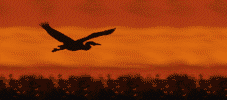Catch The Spirit of Arizona Red Rock Country home |
OH Arizona | My/Our Story | Aviation Then and Now | Airline Photos | Brief Sedona History | Movies and Movie-making | Cowboy Roundup | Wild Life | Wild Life Photos | Did you know? | Arts We Have Loved | Wedding Photos | Bird Watching | Photo Page | Monument Valley | Palatki Visit | For NATE | For NATE page 2 | Red Rock Chapbook | What's Happening?
Bruce & Sherrian Monument Valley
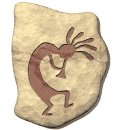
Our son, Bruce II, along with his future wife at the time, Sherrian (an RN who aids the Native Americans in their quest for good health), visit Monument Valley in Northern Arizona frequently, when they travel throughout the Indian Reservations. Note the impressive red rocks and meandering vistas in the photographs. Bruce and Sherrian took the following pictures in November 1999 with 400 ASA film, which obviously limited the resolution and quality for large photographs, but never-the-less provided us with a glimpse of the Monument Valley's awesome beauty. In my poem, "Drives Without a Clue" of Red Rock Chapbook,  I describe one of their drives in search of a particular patient's residence. Since then, we have been reading more on the Hopi and Navajo traditions in hopes of better understanding their cultures and beliefs. Monument Valley's spiritual and physical beauties leave a lasting impression on most people.
I describe one of their drives in search of a particular patient's residence. Since then, we have been reading more on the Hopi and Navajo traditions in hopes of better understanding their cultures and beliefs. Monument Valley's spiritual and physical beauties leave a lasting impression on most people.
Bruce & Sherrian in Monument Valley
November 1999
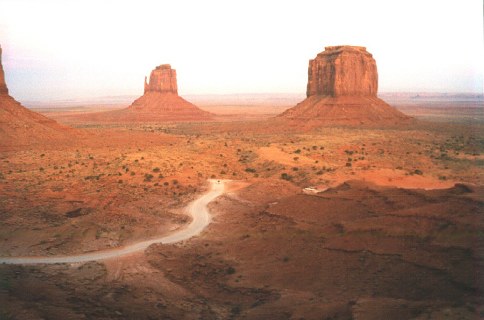
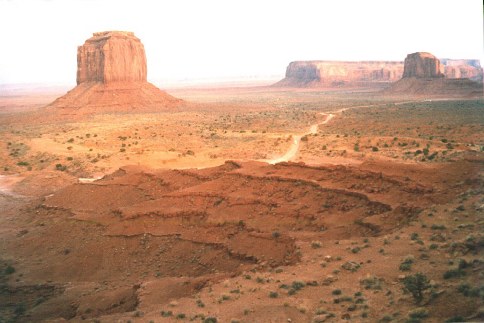
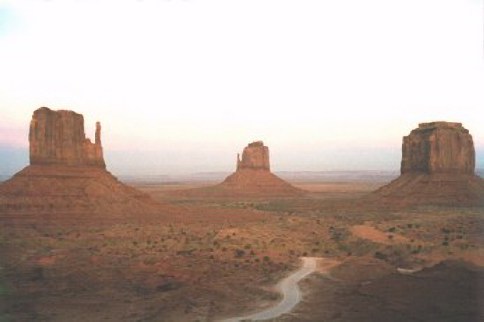
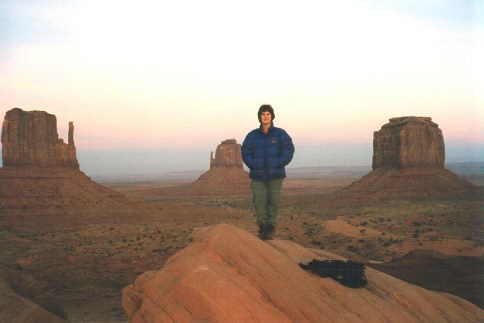
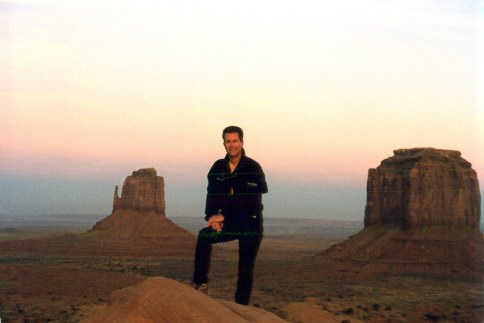
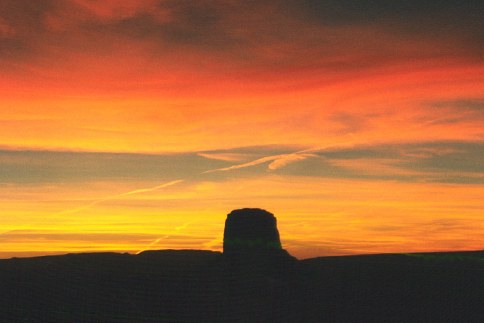

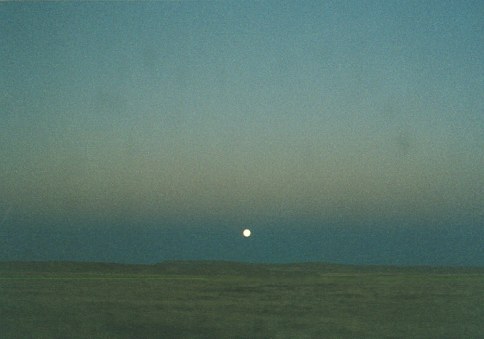
A FEW NATIVE AMERICAN WEB SITES
*I know I am not qualified to teach or inform about the Native American. However, I share some of my thoughts and observations here.
Few people understand the problems that continue to face Native Americans. Modern technology is not part of the lives of many who live on reservations. No, they don't live in tepees, but many live in simple hogans, shacks, or trailers, without electricity or telephone. Because Sherrian frequently drives many miles across the Northern Arizona reservations to treat her patients, she has gradually become familiar with many Native American taboos and traditions, and consequently more understanding and appreciative of their beliefs and problems.
I was raised with a grandfather who showed me rock formations in the pastures of our farm in North Dakota, where he pointed out their possible sacred significance and told me to respect that possibility. As a child, I retrieved arrowheads in the soil beside our doorstep and listened attentively to tales of Sitting Bull's visit to our log home in the late1890s, when my great grandmother, Mari, (said to be the first white female homesteader in the area) shared food with him and his group.
Prehistoric inhabitants were poor housekeepers. It is a good thing, or we wouldn’t know as much as we do about their lives. Their trash tells us much about their foods, tools, and habits. We know the Anasazi of the Sedona area were talented at making baskets--and perhaps pottery. A major new discovery not too many years ago, near Sedona, revealed Indian ruins and large intact pottery.
The Mogollon Indians of the Mogollon (pronounced “MUGGY-own) Rim were given their name by archaeologists. The Hohokam Indian name means “those who have vanished.” They lived in the eastern parts of the state. Archaeologists estimate that humans have lived in the Arizona area 20,000 years or longer! So, whether the first peoples walked here from Asia or came out of the ground, they have been here a long time!
A diorama of life among the basketmakers, as seen in Settlers and Strangers by Betty Baker, Macmillan Publishing Co., Inc. New York copyright 1977--from Sedona Library, gave me a clearer picture of our earliest settlers. Much of the following information is from the above book about Native Americans of the Southwest desert and how they saw its history.
Kachina spirits--were seen as messengers between the gods and the people.
Apaches and Navajos (Navahos) would not eat fish!!
Sand paintings--are part of Hopi and Navajo cleansing and healing ceremonies; paintings started at sunrise are usually destroyed by sunset. During 1960s, sand paintings were being commercially made and sold. Is that an example of whites abusing and using the Native American traditions and beliefs?
Corn was the Indian’s “meat and potatoes”--it was also the food they honored--the food they “worried about and sang for.” For many, that is still true today.
Beans eaten with corn and squash gave the people all the protein they needed--something for the meat eaters to think about!
Ceremonies were needed for everything--planting, growing, bringing rain--ceremonies growing longer as more and more dances and chants were added, some lasting 10-20 days!
Apache moccasins became knee-high to better protect from cacti and rattlesnakes.
Indian names did not originate in desire for human perpetuity but in images that best fit a man at the time he is named.
Apache boys were trained to survive alone in the desert (carry pebbles in their mouths to allay thirst--like my great-grandfather did when he walked from Boston to Bismarck, Dakota Territory).
Navajos gradually made their pit houses bigger until they became like the
hogans of today, large 6-8 sided buildings, covered with dirt to hold out the cold of high desert winters.
Apaches would cover their wickiups with hides in the winter. But, in the summer they'd let the desert breezes blow through.
Did you know that Cochise and Geronimo once made their homes in Prescott? They were leaders of the Chiricahua Apaches. One-seventh of all North American Indians live in Arizona. There are twenty Indian reservations in Arizona. What do you know about the “Dos and Don’ts” regarding Native Americans? Please, respect their traditions and privacy. Do not take photos, audio record, or do video taping of their ceremonies without permission. Use common courtesy and remember--you wouldn’t want someone venturing onto your property without an invitation! If you don’t know what to do--ask!!
